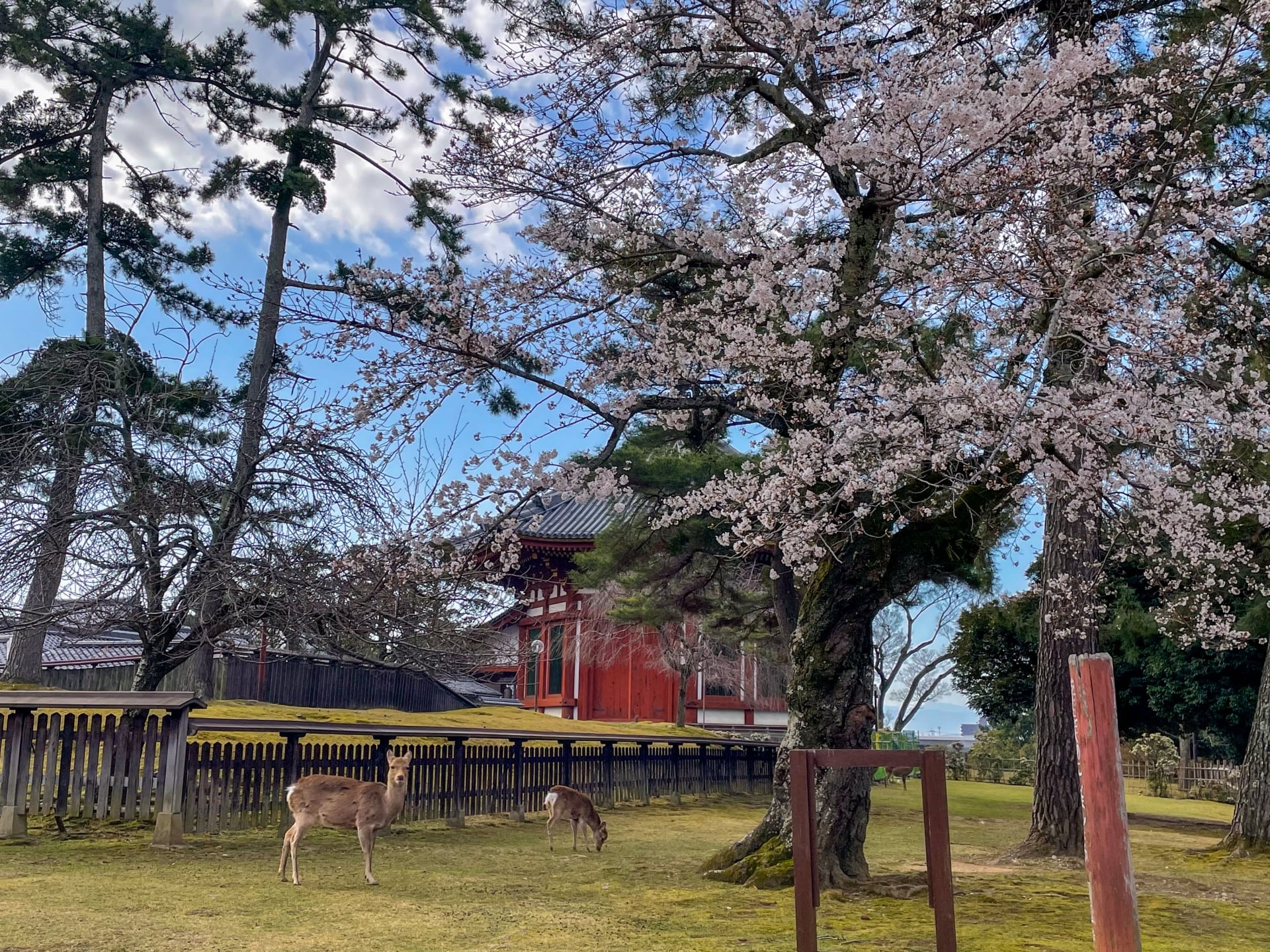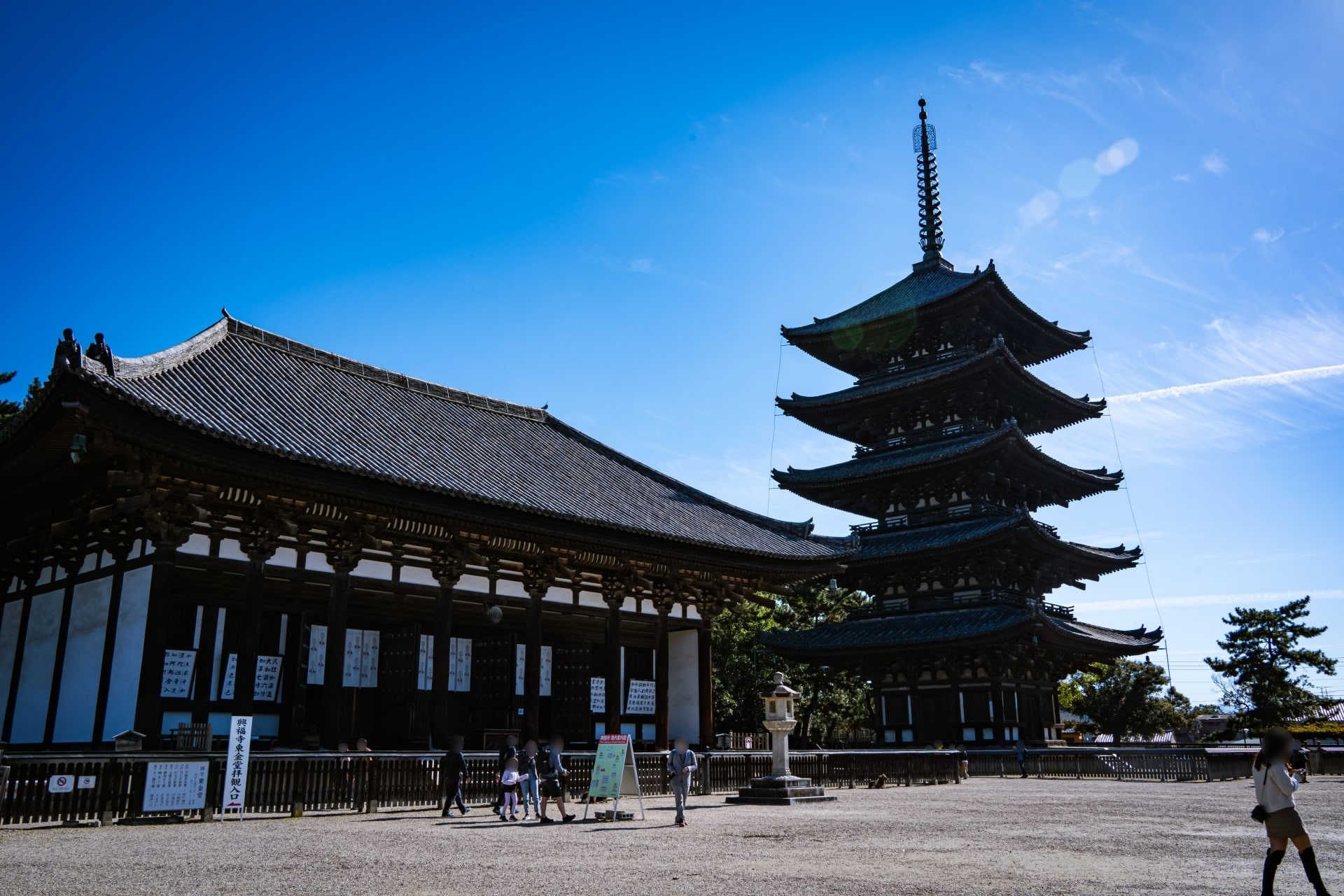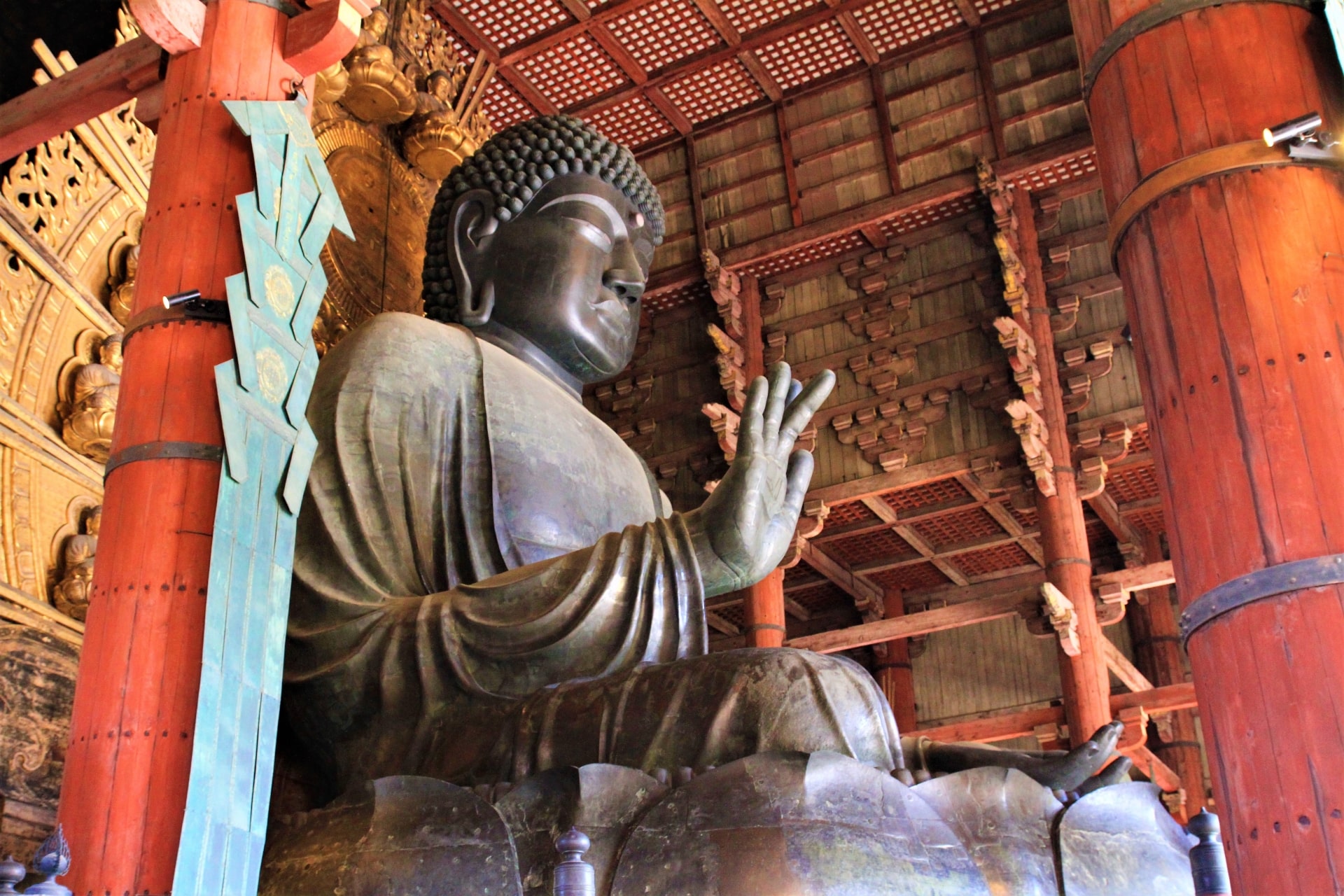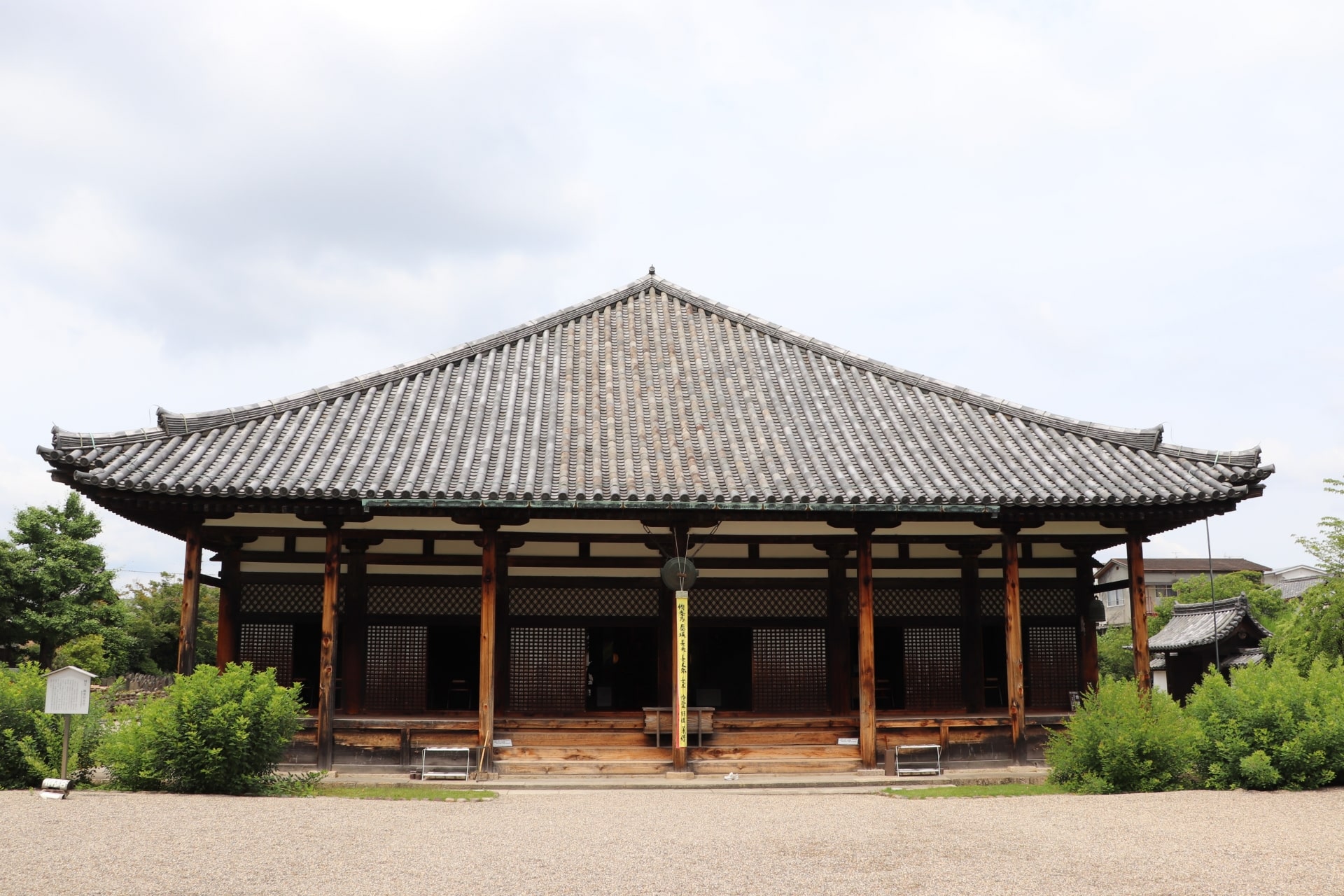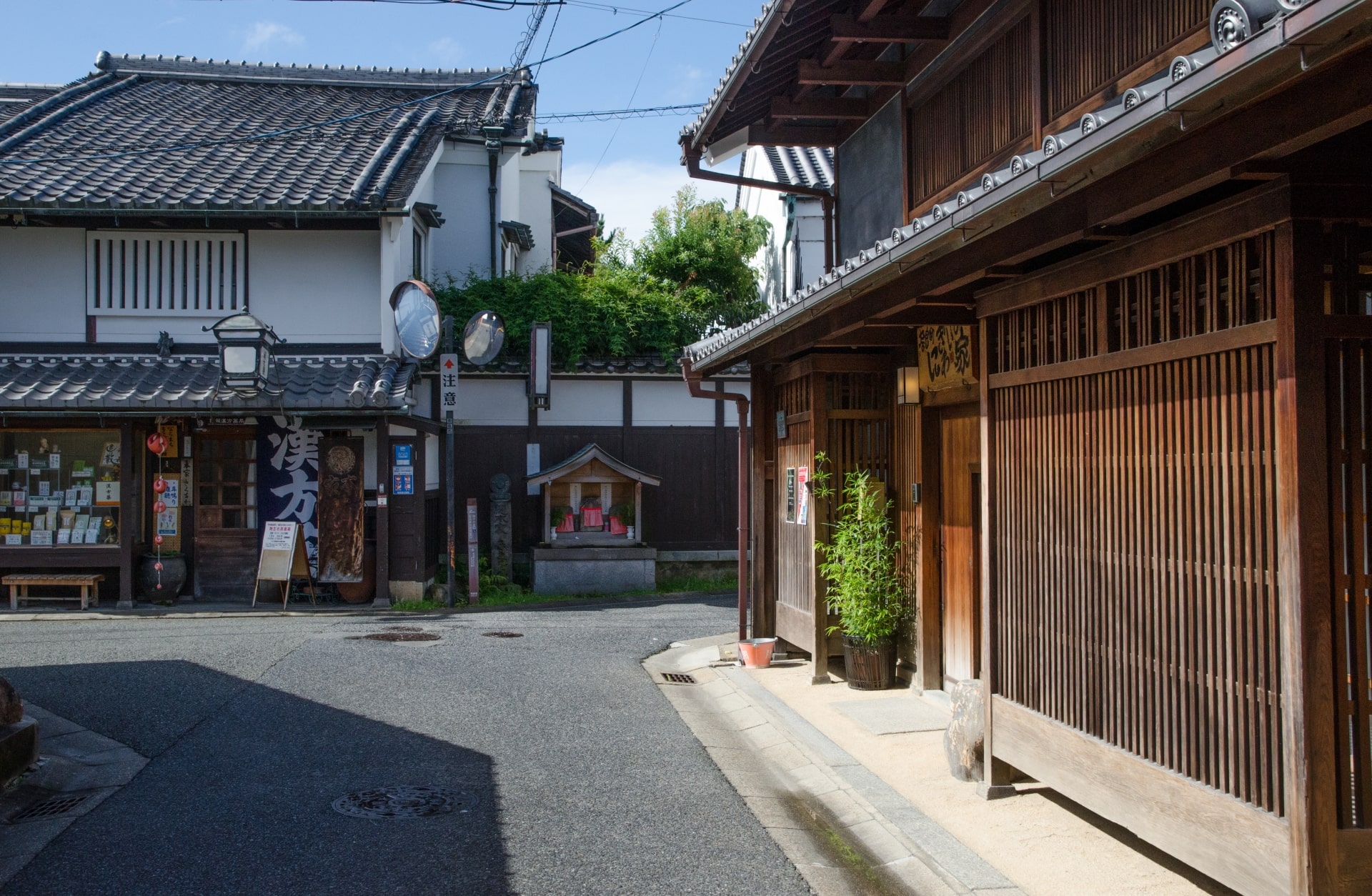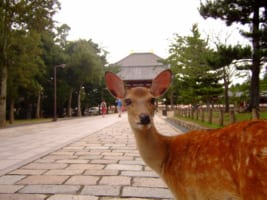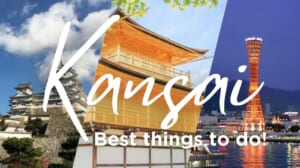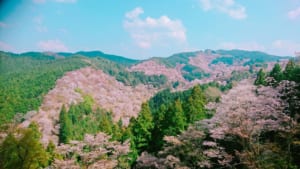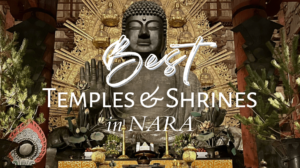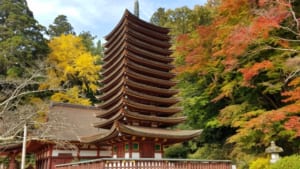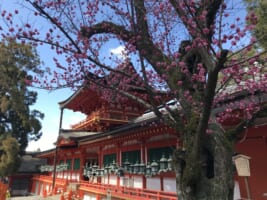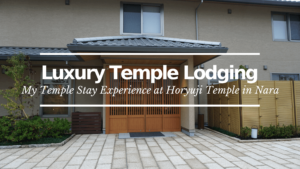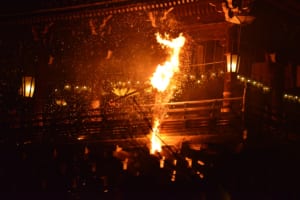1 Day Itinerary in Nara: Day Trip to Nara from Kyoto
Best walking itinerary in Nara for First-timers
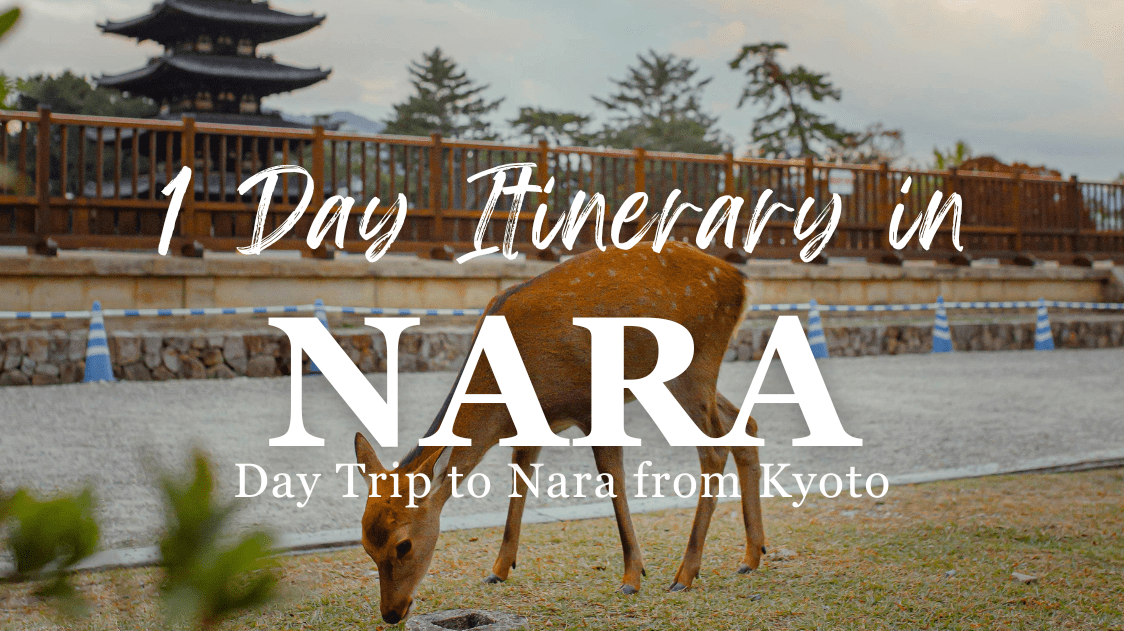
Nara is a treasure trove of Japanese history and culture, offering an intriguing blend of ancient temples, shrines, and recently popular spots. It is also a place that you can access easily from Kyoto, making it a highly popular tourist location for those who visit Japan’s old capital.
In this article, I will be sharing with you our version of a 1 Day Itinerary in Nara: Day Trip from Kyoto. The perfect guide for first-timers seeking to explore the enchanting city of Nara.
Prepare for a day filled with fascinating discoveries, and don’t forget to wear comfortable shoes, as exploring Nara’s charming streets and historical sites involves plenty of walking. Let’s dive into the heart of Nara’s rich heritage and modern allure!
*Please note that this article contains affiliate links.
Head to Kintetsu Nara Station (Start)
We begin our day trip by heading to Kintetsu Nara Station. From Kyoto Station, take the Kintetsu Kyoto Line Express
to Kintetsu-Nara (近鉄京都線). There’s about 1 train per hour and It takes a little over 40 minutes from Kyoto to Nara. The earliest train leaves Kyoto at around 6:50 am (this can change, so be sure to check beforehand).
*Note: There is also a different train station named “JR Nara Station”, but for this itinerary, we will use the Kintetsu Nara Station because it is closer to the locations we’re visiting this day.
1. Nara Park
From Kintetsu Nara Station, head East, and in a few minutes you will be entering Nara Park territory. You will immediately start noticing deer around you as you head to your first destination.
Nara Park (奈良公園) is home to wild deer, designated as national natural treasures. You can buy Shika-senbei (deer crackers) in various stores within the vicinity of the park. You can feed the deer these crackers. Although you will be walking a lot this day, it is a fun walk since you’ll be seeing these precious creatures through out most of the day.
*Note: Although these deer are in most cases calm, remember that these are not domesticated and should be treated with respect. Please don’t hit, chase, or play pranks on them. Also, please don’t feed the deer anything other than the “deer crackers”. This ensures both the safety of the visitors and the well-being of these treasured animals.
2. Kofukuji Temple (30 mins)
About 5 minutes walking from Kintetsu Nara Station, you will arrive at your first destination. Kofukuji Temple (興福寺), with a history spanning over 1300 years, is a significant cultural and religious site in Nara.
It houses numerous national treasures and important cultural properties, including the Central Golden Hall (中金堂) and the iconic Five-Story Pagoda (五重塔). The temple’s National Treasure Museum is a highlight, showcasing a wide array of Buddhist statues, including the famous Ashura statue (阿修羅像), and treasures from the Nara to Kamakura periods.
As the main temple of the Hosso sect of Buddhism, it’s part of the “Historic Monuments of Ancient Nara,” a UNESCO World Heritage Site.
 Access Access |
5 minute walk from Kintetsu Nara Station |
|---|---|
 Price Price |
500 Yen (Adults) |
 Official Website Official Website |
https://www.kohfukuji.com/english/ |
3. Todaiji Temple (60-90 mins)
From Kofukuji Temple, head deeper into Nara Park (20 minutes walk) to arrive at Todaiji Temple (東大寺). This is a historic temple and part of the “Historic Monuments of Ancient Nara,” a UNESCO World Heritage Site.
Founded in 752, the temple is renowned for housing the Great Buddha, a colossal statue of Vairocana Buddha. This iconic statue, approximately 15 meters tall and 12 meters wide, is awe-inspiring in its size and presence. The temple has endured and been rebuilt after destruction by fires twice in its history, preserving wood-constructed buildings from the Nara to Edo periods, with eight structures designated as National Treasures.
The Great Buddha Hall, also a National Treasure, is one of the world’s largest wooden structures, standing at a height of 48.742 meters, further highlighting the temple’s grandeur.
Check out more about this temple from the following links!
▶Todaiji Temple: Meet the World’s Largest Buddha
▶Omizutori: the Oldest Festival in Japan
 Access Access |
30 mins walk from Kintetsu Nara station |
|---|---|
 Price Price |
600 Yen (Adults) |
 Official Website Official Website |
https://www.todaiji.or.jp/en/ |
4. Have lunch in the Nara Park area
Depending on your pace, either after Todaiji Temple or after Kasuga Taisha Shrine will be a good time to have lunch. You won’t find many restaurants deep into Nara Park, but various places are near Kofukuji Temple.
Pretty much anything you find in this area will be delicious, but if you would like to experience Nara food, you may want to look for Kakinoha Zushi (柿の葉寿司). This is a delicacy that originated in Nara involving pressing sushi rice and toppings like mackerel or salmon into a compact shape and then wrapping it in a fragrant persimmon leaf. You can also purchase this to take back to Kyoto!
5. Kasuga Taisha Shrine (40-60 mins)
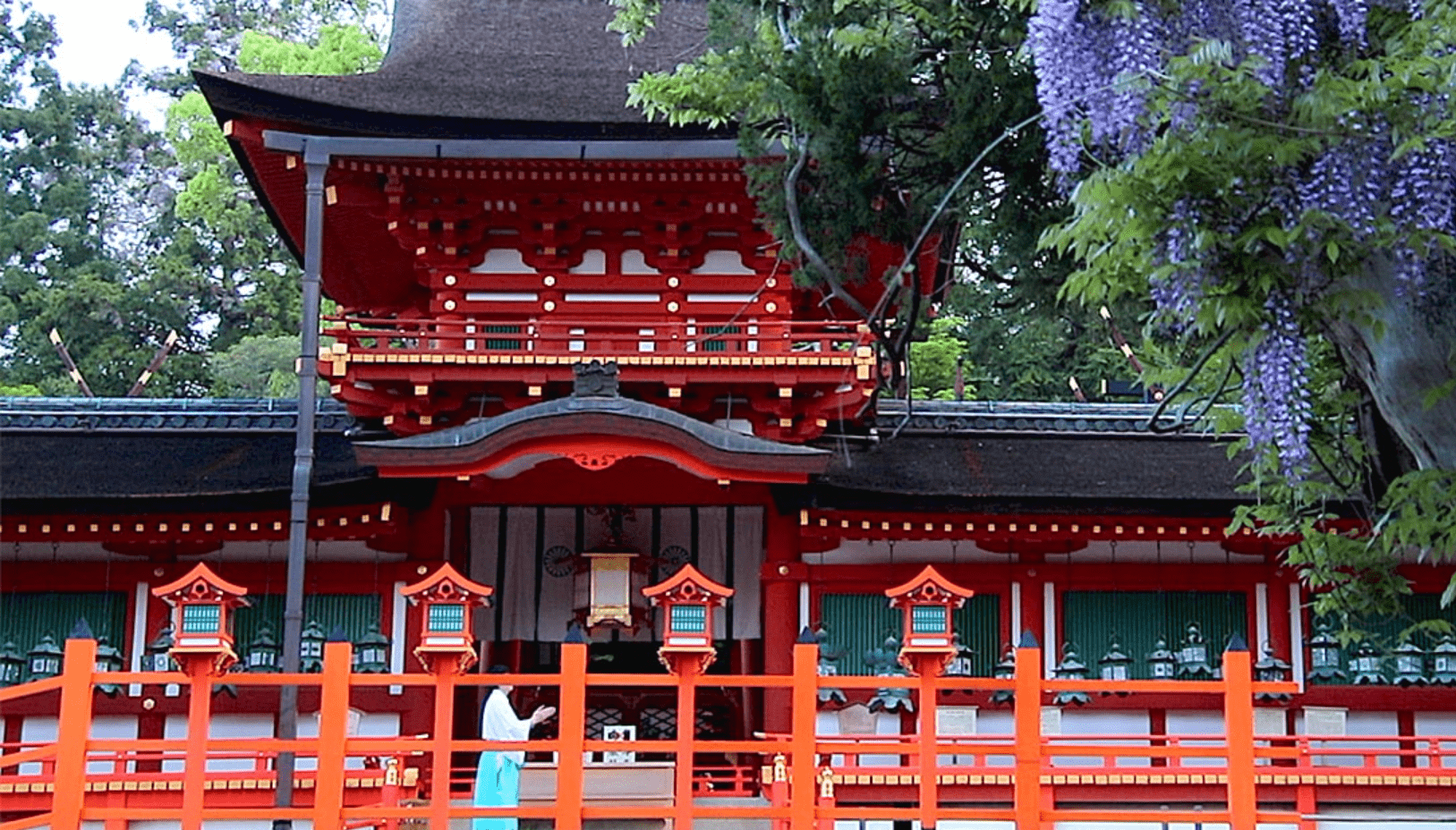
After Todaiji Temple (or lunch), we head even further into Nara Park to get to our next destination. Kasuga Taisha Shrine (春日大社), established during the Nara period, is also part of the World Heritage Site, “Historic Monuments of Ancient Nara.” It is famous for hosting over 2,200 festivals annually, wishing for the peace and prosperity of the nation and its people.
The shrine, revered as the head of around 3,000 Kasuga shrines nationwide, is known for its striking vermillion structures within its precincts. A key attraction is the approximately 2,000 stone lanterns lining the approach and 1,000 hanging bronze lanterns around the main buildings and corridors, creating a mesmerizing sight.
Kasuga Taisha has long considered deer as sacred messengers, which is why the free-roaming deer in Nara Park are protected. The “Shiroshika-mori” talisman, featuring a white deer, is also a popular keepsake.
Check out more about this shrine from the following link!
▶Kasuga Taisha Shrine: a World Heritage Shinto Shrine in Nara
 Access Access |
13 minutes walk from Kintetsu Nara station |
|---|---|
 Price Price |
500 Yen (Adults) |
 Official Website Official Website |
https://www.kasugataisha.or.jp/ |
6. Gangoji Temple (15-30 mins)
Heading west from Kasuga Taisha Shrine, we get out of Nara Park and enter the Naramachi area. After about 25 minutes walk, you will arrive at Gangoji Temple (元興寺). Flourishing alongside Todaiji and Saidaiji as one of the “Nanto Shichi Daiji” or the Seven Great Temples of Nanto, Gangoji Temple is a World Heritage Site in Nara.
Established in 718 AD, it traces its origins to Asukadera, Japan’s first Buddhist temple, built during the Asuka period (from late 6th to early 8th century). When the capital moved to Heijo-kyo (modern Nara), the temple was relocated and renamed Gangoji.
The temple, with a history of about 1300 years, features the Gokurakudo Hall (極楽堂), notable for its use of Asuka-era wood. Remarkably, some original roof tiles from before the relocation are still in use, making them among the oldest in Japan.
 Access Access |
15 minute walk from Kintetsu Nara Station |
|---|---|
 Price Price |
500 Yen (Adults) |
 Official Website Official Website |
https://gangoji-tera.or.jp/en/ |
7. Explore Naramachi
Naramachi (ならまち), centered around the former precincts of the World Heritage Site Gangoji Temple, is a delightful area known for its historical charm. This district features narrow streets lined with traditional Edo-era wooden machiya townhouses, many of which have been repurposed into museums, unique gift shops, guesthouses, and inviting traditional restaurants.
As visitors wander through the alleys and hidden pathways, they’ll discover a mix of quaint and nostalgic scenes. Retaining many old townhouses from the Edo to Meiji periods, Naramachi also boasts contemporary attractions like the “Shika Saru kitsune Building (鹿猿狐ビルヂング)”, offering a variety of dining and shopping experiences, and the traditional “Naramachi Lattice House (ならまち格子の家)” which has been high -rated in Tripadvisor.
You’ll see many trendy cafes, nice gift shops, and a variety of restaurants. It’s a nice way to spend the rest of the afternoon before having dinner.
8. Have dinner in Naramachi
While you’re in Naramachi, you will find a wide variety of restaurants from where to choose to have dinner. You will find pretty much anything in this area. From Ramen or Sushi restaurants to more traditional Kaiseki restaurants. Be sure to make reservations in case you’re planning on going to a famous restaurant, though.
Head back to Kintersu Nara Station (End)
After enjoying your dinner, it is time to head back to Kintetsu Nara Station to take the train back to Kyoto.
One thing you should remember is that although there are trains until around 22:00 or 23:00, the giftshops will close relatively early (around 19:00 or 20:00). So my suggestion is that either you have an early dinner so that you can get to the station to look for souvenirs or you look for souvenirs while your time at Naramachi.
Either way, Nara has many unique souvenirs, so it is worth taking some time to check out these shops!
The train back to Kyoto will be the Kintetsu Kyoto Line Express (近鉄奈良線特急). Depending on the time you take this train, you might need to change trains midway at Yamato-Saidaiji Station (大和西大寺駅), which will take a little less than an hour. If not, the ride takes about 35 minutes.
I hope you enjoyed this itinerary plan I created. If you did, you can incorporate this itinerary into your Kansai trip! Check out the following article for a 1-week itinerary across Osaka, Kyoto, and Nara!
As I mentioned, this itinerary will take lots of walking. If you want to get to know Nara without walking as much, taking a tour may be the thing for you. Here are some tours you might be interested in taking.
<<Book Online: Todaiji Temple, Sake Tasting, & Craft Beer>>
<<Book Online: Kakinoha Zushi, Sake Tasting, Craft Beer, & Mochi>>
<<Book Online: Nara Afternoon Tour from Kyoto>>
▽Subscribe to our free news magazine!▽
Check out the following articles for more information about Nara and its surrounding area!
▽Related Articles▽
▼Editor’s Picks▼
Written by
Born and raised in Costa Rica, I started living in Tokyo from college. I love traveling within Japan & around the world. Since I wasn’t born in Japan, I know the cultural impact that you can get when visiting Japan for the first time and what you might be worried about before your trip. And I’ve lived long enough to somewhat understand the nuances of the Japanese culture that make this country such an attractive place to visit. Hopefully I can provide to you both the information you’re looking for and the information you didn’t know you needed to know.






